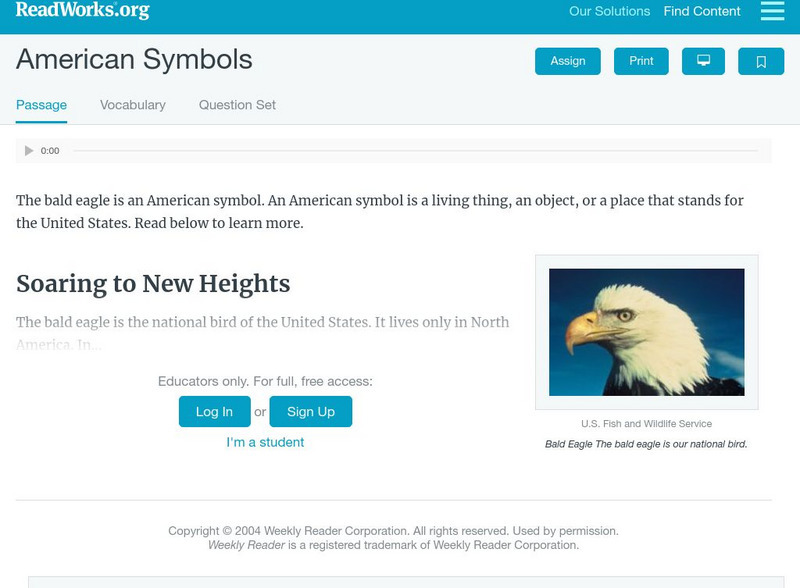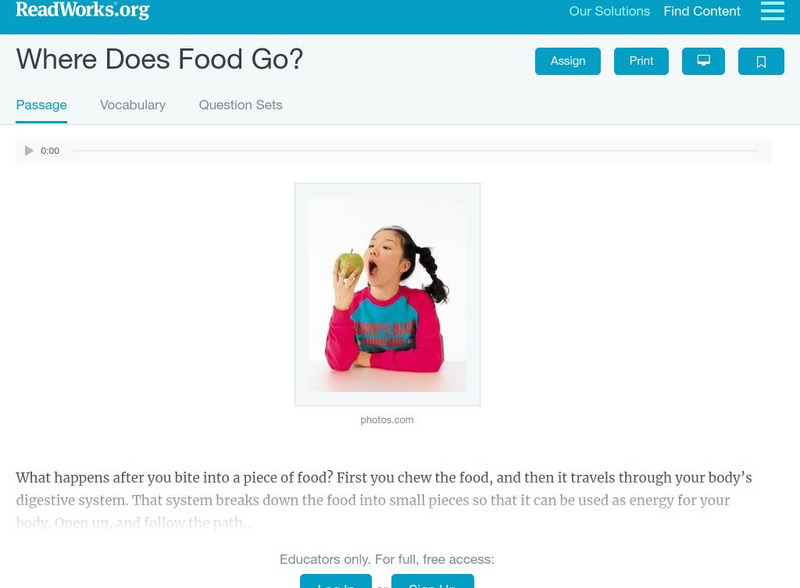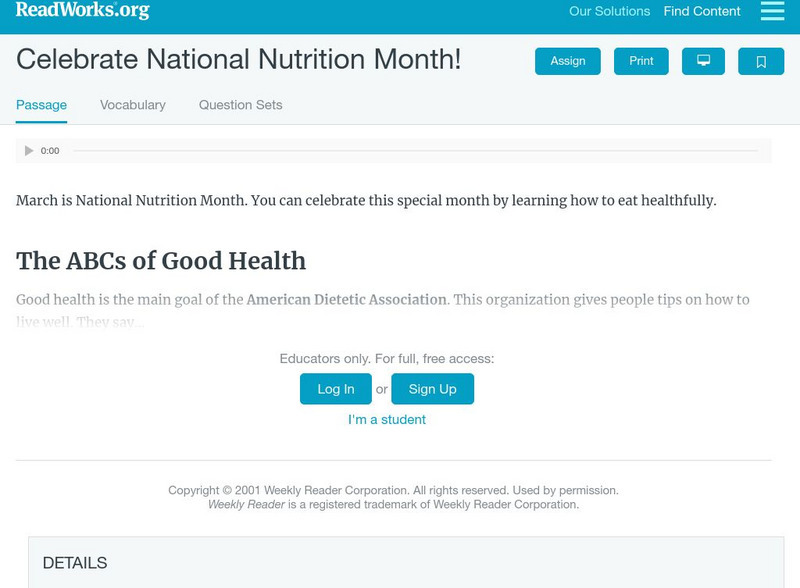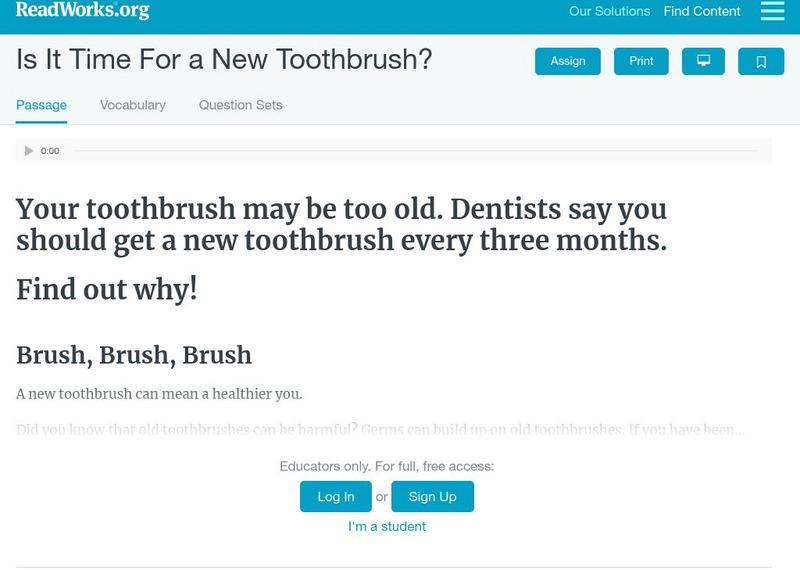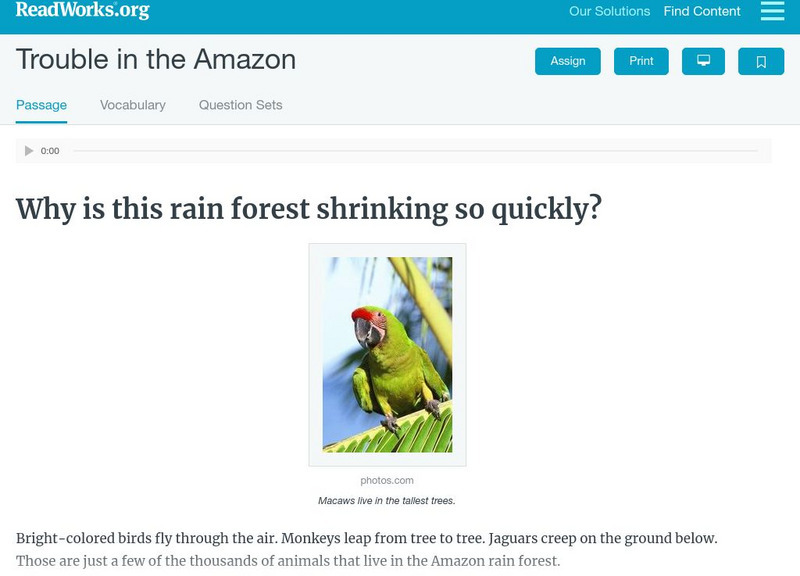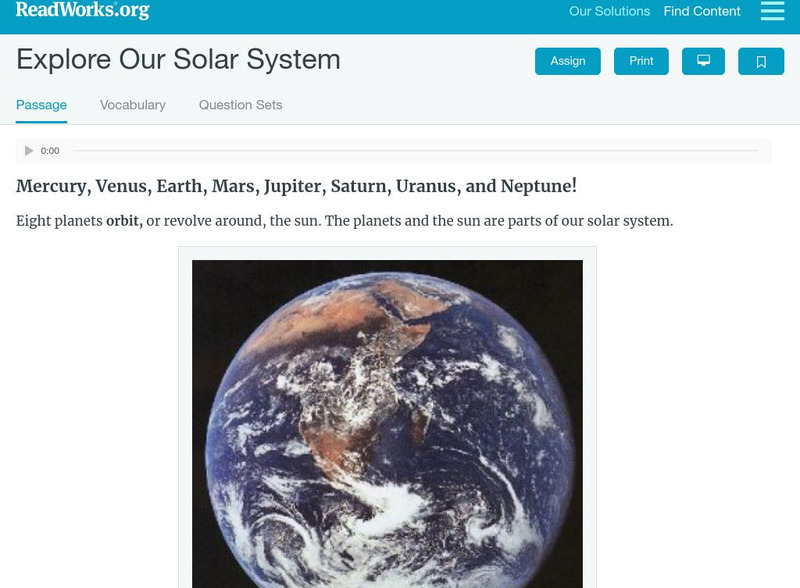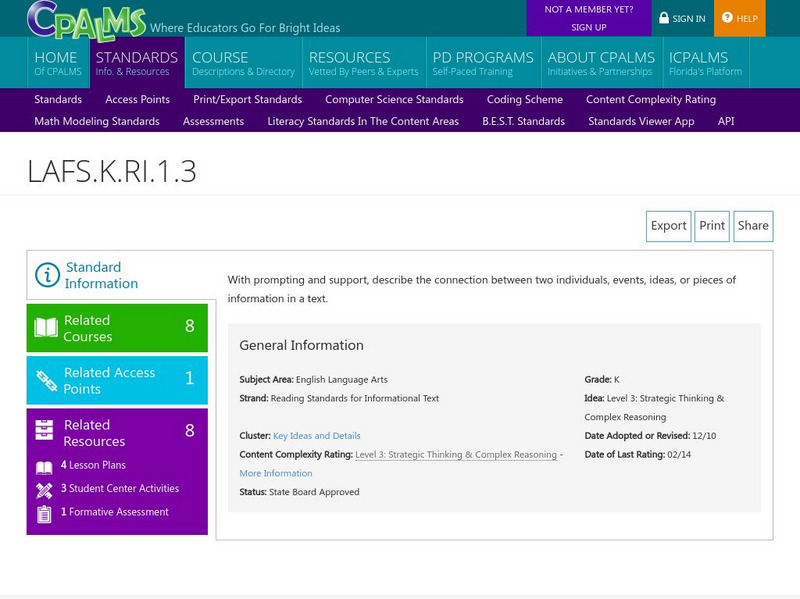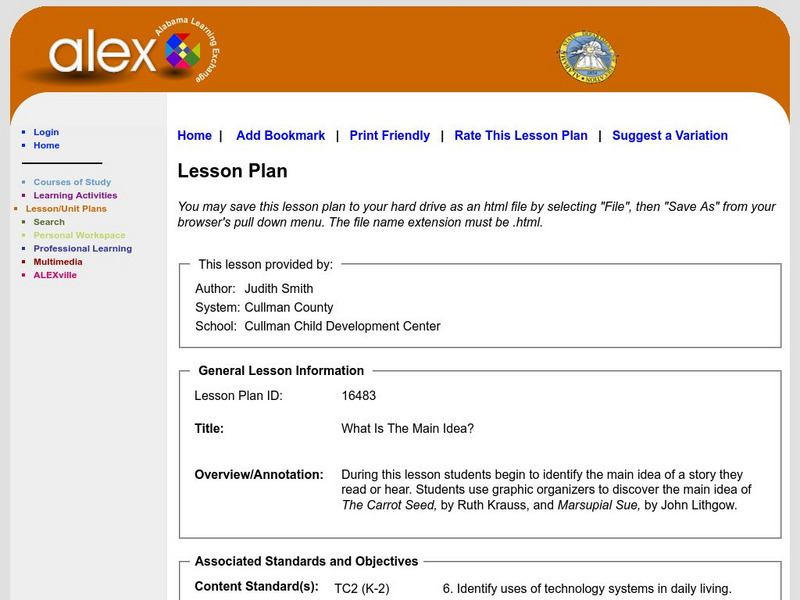Read Works
Columbus Was an Explorer
Get the inside scoop on the European explorer, Christopher Columbus, with a response to reading worksheet that requires scholars to answer who, what, why, when, and a variety of other questions about the word crew.
For the Teachers
Main Idea Outline
Find the main idea in an informational text with a versatile lesson. Three levels of differentiation help you implement the strategy in any age or class level, based on the ability and objectives of your learners.
Student Handouts
Christopher Columbus Workbook
Youngsters gain ample reading comprehension practice while studying the history of Christopher Columbus with this great workbook! It includes word puzzles and comprehension checks of multiple assessment styles, including multiple choice,...
California Academy of Science
What Kind of Geologist Am I?
Transform your class into young geologists as they learn about six different branches of geology. Using the included geology career descriptions and picture cards, learners work in small groups deciding which tools and locations fit...
Floyd County Schools
Who Is Hibernating?
Young scientists explore the wintertime behavior of common animals with this presentation on hibernation. Offering clear explanations about the who, what, where, when, and why regarding hibernation, this resource is perfect for primary...
DePaul University
Learn about Fables
Expose young readers to a new genre of fiction with a short reading passage. After learning about fables, children identify the main idea and supporting details in preparation for writing a short summary. Read the text as a class,...
California Academy of Science
Guess That Spice
From medical treatments to cooking, people have been using herbs and spices for thousands of years. Perform a blind smell test of household herbs and spices to engage students in learning about ancient spice trading. Research the history...
Curated OER
Farm Animals
Why are farm animals important to the community? Expand young farmers' knowledge of furry and feathered friends through stories and a video. There are several books recommended; however, you could use any book about farm animals. A video...
Curated OER
Agriculture in Motion
Youngsters learn about simple machines that could be used on a farm. They learn about agricluture, listen to a farmer speak, compare and contrast different farm machines, and then design their own. Note that although the publisher...
EL Education
El Education: Learning to Read Informational Texts: Building Background
In this comprehensive unit, students launch their learning about birds by using informational texts. As students read these texts, they build background knowledge and develop their skills as readers of informational texts. Included are...
Read Works
Read Works: The Three Branches of Government
[Free Registration/Login Required] Intended for early elementary students, ReadWorks provides an information text about the three branches of government. A question sheet is available to help students build skills in reading comprehension.
ReadWriteThink
Read Write Think: Digging Up Details on Worms: Using Science in an Inquiry Study
A lesson plan based on a study unit of earthworms, using the inquiry model to integrate scientific processes with literacy practices. Instruction plans, related resources, and standards are included.
Polk Brothers Foundation Center for Urban Education at DePaul University
De Paul University: Center for Urban Education: George Washington Carver [Pdf]
"George Washington Carver" is a one page, biographical passage about George Washington Carver, a famous African American, who taught farmers better farming methods including planting peanuts to improve the soil. It is followed by an...
Read Works
Read Works: American Symbols
[Free Registration/Login Required] This nonfiction passage lists and explains some of the different American symbols. This passage is a stand-alone curricular piece that reinforces essential reading skills and strategies and establishes...
Read Works
Read Works: Where Does Food Go?
[Free Registration/Login Required] This informational text passage explains the process of food digestion. This passage is a stand-alone curricular piece that reinforces essential reading skills and strategies and establishes scaffolding...
Read Works
Read Works: Celebrate National Nutrition Month!
[Free Registration/Login Required] An informational text listing some simple things people can do to help them stay healthy. A question sheet is available to help students build skills in reading comprehension.
Read Works
Read Works: Is It Time for a New Toothbrush?
[Free Registration/Login Required] This passage is a stand-alone curricular piece that reinforces essential reading skills and strategies and establishes scaffolding for vocabulary learning. It contains questions and teacher guides and...
Read Works
Read Works: Trouble in the Amazon
[Free Registration/Login Required] An informational text about the causes and effects of the decreasing rain forest. A question sheet is available to help students build skills in reading comprehension.
Read Works
Read Works: Explore Our Solar System
[Free Registration/Login Required] This informational text passage shares facts about planets in the solar system. This passage is a stand-alone curricular piece that reinforces essential reading skills and strategies and establishes...
CPALMS
Cpalms: lafs.k.ri.1.3
Choose from a variety of lesson plans, resources, center activities, and a formative assessment that meets the standard of describing the connection between two individuals, events, ideas, or pieces of information in a text.
Alabama Learning Exchange
Alex: What Is the Main Idea?
During this lesson young scholars begin to identify the main idea of a story they read or hear. Students use graphic organizers to discover the main idea of The Carrot Seed, by Ruth Krauss, and Marsupial Sue, by John Lithgow.
Beacon Learning Center
Beacon Learning Center: Web Lesson: Get the Idea
Read through a lesson about main ideas and supporting details to understand their importance. Practice choosing the main idea of three nonfiction paragraphs. Features practice activities to enhance learning.











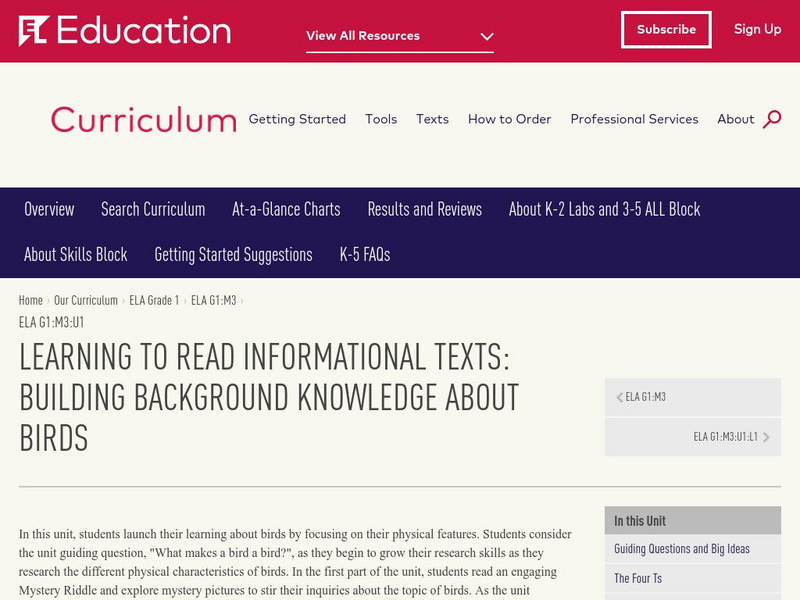


![De Paul University: Center for Urban Education: George Washington Carver [Pdf] Unit Plan De Paul University: Center for Urban Education: George Washington Carver [Pdf] Unit Plan](https://static.lp.lexp.cloud/images/attachment_defaults/resource/large/FPO-knovation.png)
